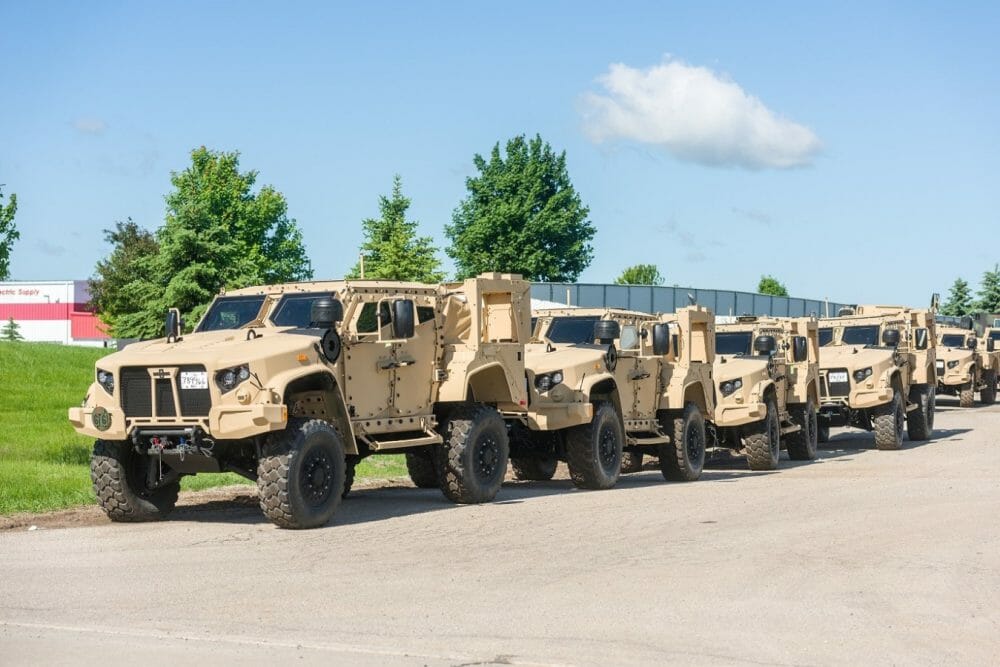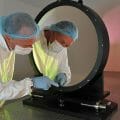How the emergence of IEDs changed military vehicle design.
Military vehicle design engineers strive to create vehicles that can perform on rough terrains, in harsh climates and against ever-evolving threats. Here, Roger Brereton, head of sales at military steering components supplier Pailton Engineering, explains how these vehicles have evolved in the last quarter of a century to combat new and emerging threats.
Despite the ending of the Cold War, the 1990s saw the emergence of new forms of conflict. One key trend was the growing prevalence of intrastate conflict, civil wars that spilled across national borders and were transnational in form. Another was the prevalence of security threats from non-state actors, such as terrorist or insurgent groups.
Following the tragic events of September 11, Western defence forces found themselves embroiled in brutal counter insurgency campaigns in Afghanistan and Iraq. The nature of the threats faced in these conflicts created new challenges for military vehicle design.
From Humvees to Oshkosh
It was the use of improvised explosive devices (IEDs), perhaps more than any other factor, that shaped the changing equipment needs of Western forces. This was especially so for military vehicles, which now needed to be engineered to withstand the threat of roadside bombs. In Afghanistan, for example, over 40 percent of UK military casualties, and almost 50 percent of US casualties can be attributed to IED attacks.
This challenge exposed the shortcomings of one of the world’s most famous vehicles. The High Mobility Multipurpose Wheeled Vehicle, or Humvee as it is better known, debuted in 1983 and made its first combat appearance during Operation Just Cause in Panama in 1989.
It was widely used in the first Gulf War in 1991, a conflict whose short and decisive outcome showcased US military power at its zenith in the immediate post-Cold War period. Arnold Schwarzenegger then persuaded AM General to build a civilian version, further cementing the vehicle’s iconic status in the form of the Hummer.
Although widely used early on in the conflicts in Afghanistan and Iraq, the Humvee was not originally designed for a combat role. Its low profile and lack of body armour made it an easy target for insurgents. The British equivalent, the Snatch Land Rover, demonstrated similar problems with survivability.
Additional armour was hastily added following a high number of casualties in 2006, but that meant additional weight that the Humvee was not designed to carry. By 2010, their use outside of bases was increasingly restricted. Henceforward, Western forces used much more heavily armoured vehicles.
Military original equipment manufacturers (OEMs) set out designing vehicles that were specifically engineered to cope with the challenge posed by the IED threat. Heavier armour was key, but perhaps the most visible engineering change was the emergence of the V-shaped hull designed to offer better blast protection.
Improving survivability in the face of this threat was not the only engineering challenge that military vehicle OEMs had to face. The rugged terrain and searing temperatures also placed heavy demands on the vehicles. These vehicles and the parts they rely on, from the engine components to the suspension joints, must be extensively tested to withstand temperature extremes and the harshest under-chassis environments.
Oshkosh ascendant
The shortcomings of the Humvee paved the way for Oshkosh to further its reputation for innovation and reliability. In 2015, Oshkosh won the right to build the Humvee’s successor, the Joint Light Tactical Vehicle (JLTV), facing down competition from Lockheed Martin and Humvee manufacturer, AM General.
The JLTV is built on a decade of experience in Mine Resistant Ambush Protection (MRAP) trucks in Afghanistan and Iraq and is combined with performance capabilities that would have seemed staggering a couple of decades ago. When a journalist for BBC’s Top Gear tested the vehicle over a bumpy assault course, he was astounded by the vehicle’s ability to handle bumps: ‘it’s absurd. This is the best-riding car I’ve ever driven’.
However, it is Oshkosh’s reputation for reliability that has been key to its success in winning contracts like the JLTV. The company consistently delivers what it promises on schedule and often, under budget. Oshkosh is also unique in the diversity of the vehicle portfolio it supplies to the US military. In addition to the JLTV, it builds all the medium and heavy trucks for both the Army and the Marine Corps.
Versatility in the face of uncertainty
How can military vehicle engineers design equipment for the next generation of challenges, given the security landscape is often seen as more uncertain than ever before?
The IED threat is unlikely to disappear quickly. Their use by nonstate actors has increased significantly in the last decade, not just in the conflicts in Afghanistan and Iraq, but in any conflict where jihadist insurgents have been involved. Heavy body armour, and the design innovations brought about to accommodate this, will likely remain for many vehicle types.
On the other hand, military planners are having to hedge their bets in an uncertain world, with budgetary constraints an ever-present factor in decision-making. Those vehicles that offer versatility have a better chance of retaining their value. The recent British defence review saw the axing of many vehicles originally designed specifically for the Afghan conflict. In contrast, vehicles like the JLTV and the Boxer, that can offer both IED protection and versatility, will likely retain their value in the face of new and emerging threats.
Pailton Engineering supplies suspension joints and steering components to military vehicle original equipment manufacturers, including Oshkosh. To find out more, visit pailton.com








